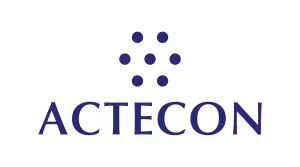Introduction
Innovation is a "must" for most of the companies, especially for big tech such as Facebook, Amazon, Apple, Google, Microsoft and others in a data and tech-driven world. However, it is not always possible for the internal R&D departments to hit the right spots every single time due to both practicability and economic reasons. As a result, seizing the existing opportunities and acquiring a fresh start-up which brings the required innovation with limited resources appears to be a popular solution. However, this approach has its positive and worrisome characteristics in the eyes of competition authorities.
Especially since mid-2010s, M&A's in the digital markets started to create a concern as to whether current competition rules and implementation are insufficient to assess these M&A's. The standpoint of competition authorities in former cases drew more attention than ever and competition authorities' past decisions are being called into question.
In this piece, we will evaluate the effects of these acquisitions in digital markets along with the reactions of the competition authorities.
Digital Platforms and Importance of Data
As the era of digitalisation is in front of our doors in different fields and dimensions, a different approach may be needed to understand the characteristics of digital markets even though competition laws are flexible and innovative to some extent. Such a need seems to ever more present especially on fields that depend on Big Data and AI. Moreover, the fact that "monetary price" of digital goods and services are far from reflecting the overall picture in digital markets due to the increasing worth of data is another reason why conventional and accumulated wisdom in competition law may just miss the target when dealing with the relationship between the structures of such markets and the welfare of the recipients of relevant goods and services.
The term "data" refers to personal or commercial information, which are commercially valuable especially if only one or a few competitors are able to access these. Reasonably, latest trend for digital firms is to develop their strength in the processing and collection of "data", as it is the key to knowledge and fuels algorithms that creates competitive differences in today's world. As it is not possible to establish a direct link between data and turnover, especially in the initial phases of start-ups where they manage to collect a significant amount of data but did not yet figure out how to monetize, current merger review thresholds can be inadequate. Certain acquisitions do not trigger the notification thresholds although they may relate to the acquisition of significant future challengers by big tech companies in their incipiency.
From the perspective of the dynamics of digital era, if there is one asset that is more important than cash, it is data. Thus, acquiring small (in terms of turnover) but data-rich services may allow the acquirer to enjoy the best of both worlds by increasing its competitiveness vis-à-vis the existing rivals and eliminating the threat of a new challenger with a single blow. The recently cleared acquisition of Apple/Shazam may be given as an example to the foregoing. Thanks to Shazam's huge database, containing not only Apple Music users' data, but also those of other competitors' such as Spotify, Youtube Music, Tidal and Deezer; Apple now has access to key data of its competitors. Yet, this is not all. The merger also allowed Apple to put aside any concerns regarding Shazam's entering into competition with Apple Music in the future. One can see a pattern when company's former actions which consists the acquisitions of Beats Music in 2015, BookLamp in 2014, Dryft in 2014 and Prime Sense in 2013 is looked at as a whole.
Merger Control in the Digital Markets
The main problem that prevents competition authorities from even being able to examine some digital acquisitions, especially start-up acquisitions, appears to be turnover thresholds. However, if a too low threshold is to be introduced, a significant amount of irrelevant transactions would have to be evaluated, creating resource problems and inefficiencies. In that vein, adopting alternative approaches to turnover-based thresholds (e.g. transaction value thresholds) or designing sector specific merger review rules for digital markets may be required to solve this problem.
In addition, constructing counterfactuals may have to come very close to fortune-telling when it is considered that the data and technology belonging to a start-up may be used in a broader scope once internalized by an acquirer, which is active in various markets and is conducting R&D activities regarding numerous other alternatives. Furthermore, the fact that such acquisitions are no longer limited to start-ups, and that giant companies which can be considered as leaders in their markets may also become subjects, increased the significance of this issue even further.
Since 2016, OECD started to hold roundtables, hearings and conferences regarding the digital economy and competition. Within this scope, OECD organized the "Competition and Digital Economy" conference in June 2019. A salient point that OECD expressed was the challenges facing current competition rules vis-à-vis the digital economy. Importantly, OECD placed this subject (i.e. "how to treat mergers in digital markets") among the five issues to be explored in the future1.
Regulators and competition authorities are digging hard to find a way to strengthen and solidify their assessments in digital mergers. Below we scan three recent development in this regard.
Facebook/WhatsApp Case
Undoubtedly, one of the most significant cases which led to discussions among the competition authorities regarding the effectiveness of turnover thresholds was the WhatsApp/Facebook merger. Since WhatsApp's turnover in 2013 did not trigger the turnover thresholds in the EU Merger Regulation ("EUMR"), it was considered that the transaction did not have an EU dimension. However, the transaction was reviewed under the national competition laws of Portugal, Spain and UK. Pursuant to Article 4(5) of the EUMR, Facebook requested the Commission to examine the transaction within the scope of the referral system. Even though certain significant digital mergers including Facebook/Instagram and Google/Waze deals avoided Commission's scrutiny due to the turnover thresholds before, implications of a facing the possibility (though this was not realized due to Facebook's willingness to initiate the referral mechanism voluntarily to let the Commission evaluate the transaction) of letting an USD 22 billion transaction which affects almost 2 billion users worldwide slide by without any examination were quite serious.
As a consequence of Facebook/WhatsApp incident, creating "safety nets" that would allow authorities to examine digital mega mergers that do not trigger turnover thresholds became a priority and Bundeskartellamt, along with the Austrian Federal Competition Authority ("BWB"), led the way in 2018. In order to fix the so-called "WhatsApp-gap", Germany and Austria introduced a new transaction value threshold which aims to cover cases where current turnover and the purchase price for the company differ to a disproportionate extent2. Also, paragraph 2 of the Guidance on Transaction Value Thresholds for Mandatory Pre-merger Notification (Section 35 (1a) GWB and Section 9 (4) KartG) published by Bundeskartellamt and BWB explicitly stressed out that the main goal to introduce this threshold is to close the gap in the system3:
"Section 35 (1a) GWB and Section 9 (4) of the Austrian Cartel Act 2005 (Kartellgesetz, KartG) close a gap in the system of merger control so that it is able to perform its function to the fullest extent in an increasingly dynamic economic environment. This also takes account of the progressive digitalisation and integration of economy and society."
By this amendment, the transaction value threshold became effective in both Austria and Germany4. Yet, introducing such a threshold may create another problem from the perspective of administrative costs. Since this threshold is not industry specific, it may catch certain transactions that would not create any competition concerns, creating an additional burden on competition authorities.
Furman Report
Another significant development in relation to competition in digital markets was realized in the UK. "Unlocking digital competition Report of the Digital Competition Expert Panel", commonly known as the "Furman Report", was published and revealed innovative recommendations for the competition law assessment in the digital era. With regard to big tech-mergers, the Furman Report underscored that the largest five tech companies have made over 400 acquisitions globally in the last 10 years5. The Furman Report also emphasized that during last five years, none of the 250 acquisitions that have been realized in digital markets were notified voluntarily to the CMA, and none were called in for investigation, either at phase 1, or phase 2 levels6.
A very strong language is preferred in the Furman Report regarding the current approach of competition authorities towards mergers in digital markets, calling for a "reset". As a strategic recommendation, it further pointed out that "the CMA should take more frequent and firmer action to challenge mergers that could be detrimental to consumer welfare through reducing future levels of innovation and competition, supported by changes to legislation where necessary" 7.
With regards to the thresholds applied by the CMA, the Furman Report acknowledges that the share of supply test may provide flexibility to the CMA in order to catch the mergers.
However, the Furman Report also recognizes that a transaction value threshold may be considered in the future, in case the share of supply test ever becomes insufficient.
In addition to the Furman Report, in July 2019, the CMA also published a report called "Digital Markets Strategy Report". In the report, the CMA classified the potential reform of its merger assessment methodology as first priority, stating that even though merger assessment tools were built for the analogue age, it is important to use existing powers to the fullest extent possible in the digital age as well. This report may constitute a blueprint for the designing of future enforcement action8.
Commission's Position
In 2019, the Commission published a report, thoroughly analysing the digital economy and its effects on the competition policy. The report was titled "Competition Policy for the digital era" and a complete section was allocated to merger and acquisitions in the digital arena.
The Commission acknowledges that under current merger control framework, it may have difficulties in catching digital acquisitions due to the relatively low turnover that start-ups may generate. As pointed out above, by their very nature, start-ups mostly focus on creating their product and establishing user base instead of in the short term and views monetisation as a secondary concern. The Commission expressed that it is very well aware of the fact that some digital mergers may get away unnoticed in the current turnover threshold system, whilst also emphasizing that certain cases are brought before the Commission via referral system such as Facebook/WhatsApp and Apple/Shazam.
While concluding the section assessing the potential new thresholds in its in-depth report, the Commission pointed out that although it is following the developments closely, the EU should not change its current system for now9:
"We consider that, against this setting and in light of the difficulties that the introduction of a non-turnover-based threshold into the EUMR would raise, the EU should wait and assess a) how the new transaction value-based thresholds in Austria and Germany play out in practice, and b) whether the referral system would ensure that transactions of EU-wide relevance are ultimately analysed at EU level. Only if major gaps arise should the EUMR be amended. Even then, there will remain a choice between strengthening and improving the referral regime or amending the EUMR's jurisdictional thresholds."
Conclusion
Law needs to catch up with the rapid developments in the world which are certainly accelerated in the new millennium after computer and internet became an inseparable part of our lives. By the establishment of digital platforms, this change increased its pace even further along with its scope and dimensions. New markets have been created which have completely unfamiliar characteristics for the regulators, making life extremely difficult for them. Competition rules were among those that felt the effects of transition to a brand-new reality most strongly and even experienced existential crises on some fronts. Now we are living in a digital era whereby data has immense influence over our lives, and it is steadily becoming the new "currency" in many respects. The idiosyncrasies of digital era require the adoption of new approaches and the development of new methodologies for analysing competition in digital markets. As market dynamics are entrenched in the fabric of competition law, the interpretation of the relevant rules evolved along with the markets themselves and competition law was obliged to face and conquer "unprecedentedness" a few times in its relatively brief history. Today, there is a new challenge in the form of the digital economy, and concrete steps have been taken in the last 5 years to reconcile old habits with new realities. Yet, it seems that the digital economy will be the hottest topic in the competition authorities' agendas for a while and it will take some time for the competition rules to take their final form.
Footnotes
1. https://www.oecd.org/competition/digital-economy-innovation-and-competition.htm
2. Paragraph 2 of Guidance on Transaction Value Thresholds for Mandatory Pre-merger Notification (Section 35 (1a) GWB and Section 9 (4) KartG), para. 3.
3. Paragraph 2 of Guidance on Transaction Value Thresholds for Mandatory Pre-merger Notification (Section 35 (1a) GWB and Section 9 (4) KartG), para. 2.
4. For Germany, the value of the transaction should exceed EUR 400 million and for Austria, the value of the transaction should exceed EUR 200 million.
5. The Furman Report, page. 12.
6. The Furman Report, page.91.
7. The Furman Report, page. 93.
8. CMA's Digital Markets Strategy Report, page. 9.
9. Competition Policy for the digital era, page 115.
The content of this article is intended to provide a general guide to the subject matter. Specialist advice should be sought about your specific circumstances.



